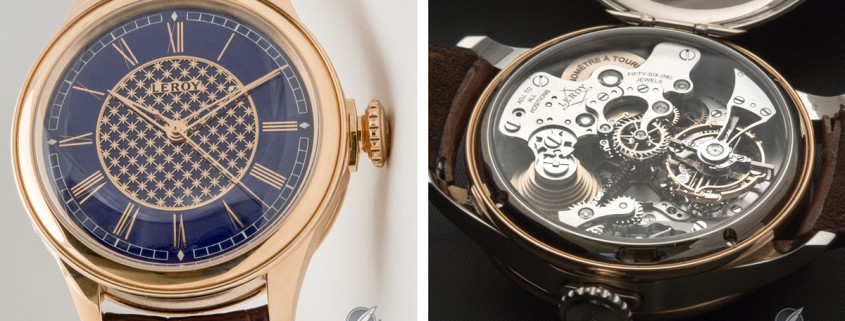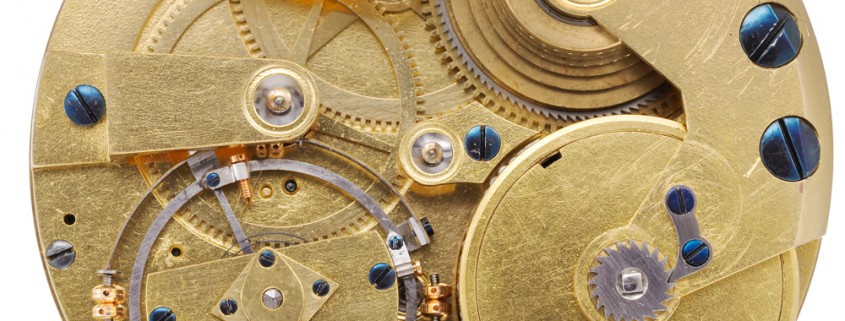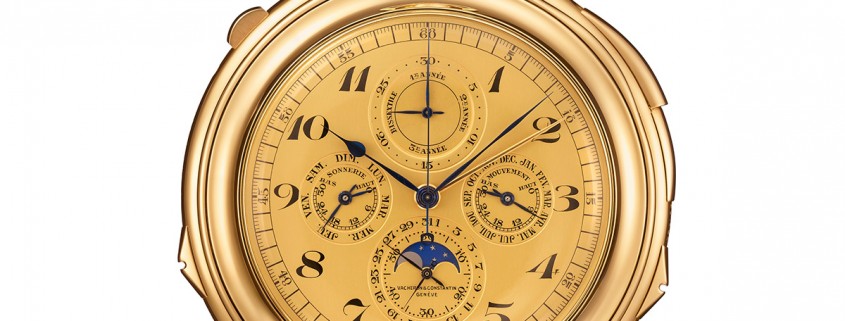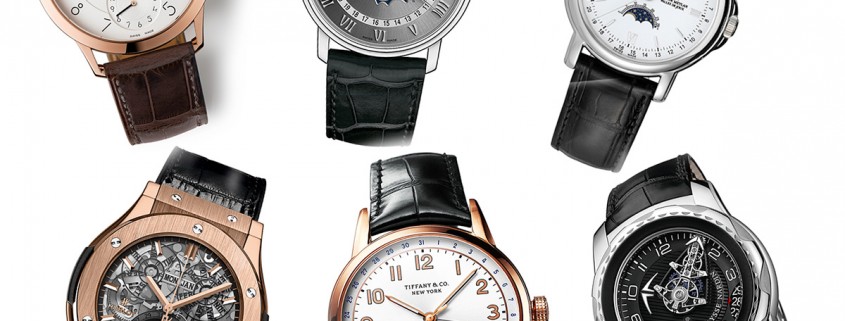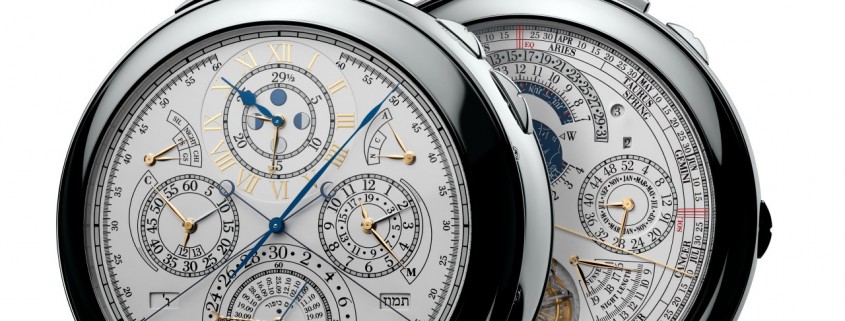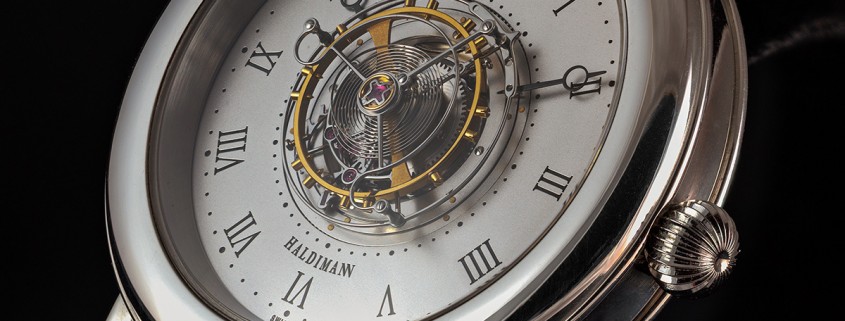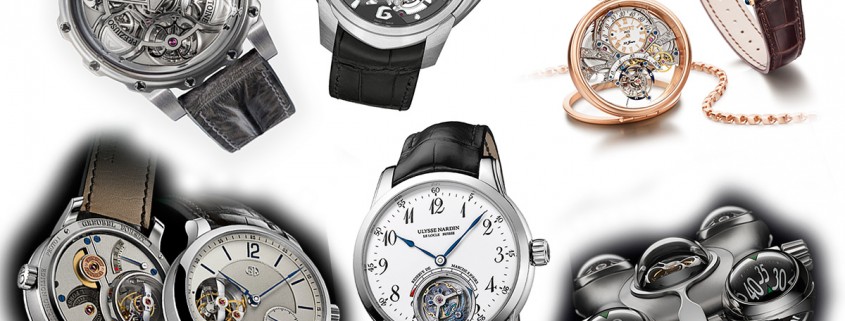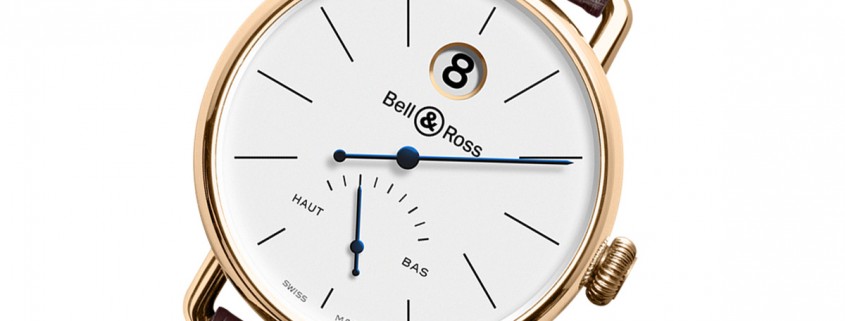Leroy Chronomètre à Tourbillon: A Proverbial Wolf In Sheep’s Clothing
Now, I know you are thinking, the Leroy Chronomètre à Tourbillon seems like a nice enough watch.
And at first glance it is.
If you have gotten close enough to gaze at the beautiful enamel and understand the secrets hidden within the dial, then there is a good chance you will see and understand the real goods – those that make you wonder what is going to be inside the case.
Flipping over the Chronomètre à Tourbillon you find an unassuming hunter case back, but getting it open, again, precludes a secret: a hidden button underneath the crown. Pressing that button throws you back and rocks your world.
Who Was Ferdinand Berthoud And Why Should We Care?
Ferdinand Berthoud was born in 1727 in Switzerland. When he passed away in 1807, after having lived most of his life in Paris, he left behind a vast body of work in marine chronometers, clocks and watches, tools, scientific measuring instruments, and written publications including dozens of specialized books and treatises encompassing 4,000 pages and 120 engraved plates. The search for precision was his life. But why are we bringing this up now?
Give Me Five! Vacheron Constantin’s 5 Most Complicated Pocket Watches Ever
Vacheron Constantin’s history has been filled with extraordinary, complicated, and elegant timepieces.
In honor of the introduction of the world’s most complicated timepiece on September 17, 2015, let’s stroll through the annals of the horological history books to take a gander at the five most complicated pocket watches the traditional Genevan “maison” has produced throughout its 260-year history, beginning of course with the record-holder itself, Reference 57260.
Quill & Pad’s Predictions For The Calendar Category Of The 2015 Grand Prix d’Horlogerie de Genève
Welcome to the 2015 edition of Quill & Pad’s early Grand Prix d’Horlogerie de Genève (GPHG) predictions in which we pick our favorites and explain why. The six pre-selected finalists in the Calendar category are: Blancpain’s Villeret Quantième Complet, the Claude Meylan Full Calendar, Hermès’ soon-to-be-iconic Slim d’Hermès QP, Hublot’s Classic Fusion Aeromoon, the Tiffany & Co CT60 Annual Calendar, and Ulysse Nardin’s FreakLab.
Vacheron Constantin’s Reference 57260 Is The Most Complicated Portable Watch In The World
Eight years ago, Vacheron Constantin began building a mechanical work of art destined to become the world’s most complicated watch under the aegis of its bespoke watch division.
Atelier Cabinotiers offers connoisseurs the chance to commission a custom-made watch according to their own tastes and designs (but within the boundaries of the brand’s style). Reference 57260 came into being thanks to one of the world’s foremost collectors, a great connoisseur of horological art. This collector specifically requested that Vacheron Constantin create world’s most complicated timepiece for him.
Richard Mille And Arts & Elégance Chantilly: Now This Is Stylish
Richard Mille is an extreme automobile enthusiast. That is not a secret. In fact, you could almost say that Mille’s brand has been built around his love of automobiles and racing. So, it was a natural fit for the brand to partner with car event specialist Peter Auto in recreating the Chantilly Arts & Elégance classic car show.
Behind The Lens: Beat Haldimann’s H1 Flying Central Tourbillon
In my view, every successful independent watchmaker has elements of a “house style” that may attract some buyers and put off others, but nonetheless sets him or her apart. And, at the highest level, this style goes beyond “branding” to become an expression of the personality and artistic vision of the creator. In the picturesque Swiss town of Thun, Beat Haldimann and his small team distinguish themselves by focusing on technical virtuosity of the highest order, as typified by the Haldimann H1 Flying Central Tourbillon.
Quill & Pad’s Predictions For The Tourbillon Category Of The 2015 Grand Prix d’Horlogerie de Genève
The six pre-selected finalists in the Tourbillon category of the 2015 Grand Prix d’Horlogerie de Genève are: the Ulysse Nardin Ulysse Anchor Tourbillon, Greubel Forsey Tourbillon 24 Secondes Vision, MB&F HM6 Space Pirate, Antoine Preziuso Tourbillon of Tourbillons, and the Bovet 1822 Braveheart. Here are our picks and why.
Sensuality & Bell & Ross: Vintage WWI Heure Sautante
It’s understood that different things and experiences can be sensual for different people, and yet sensuality can’t ever be wholly objective since everyone has his or her own subjective view due to their own physiological differences. My first view of the Bell & Ross Vintage WWI Heure Sautante hit me in what can only be described as a sensual way.
Time-Lapse Of Aurora Borealis In Jackson Hole, Wyoming
While on holiday in Jackson Hole, Wyoming I thought that I would take advantage of the moonless, clear sky and try my hand at shooting a time-lapse series of photos of the stars rotating. I set up my Canon 5D Mk III on a tripod pointing roughly north with the following settings: Lens: 35 -70 mm set to 35 mm; F: 4.0; ISO: 1600 and shutter: 30 seconds. This is the big surprise that I got!

